Total Solar Eclipse 2009 China
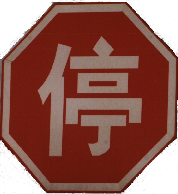 Warning: Staring directly at the Sun (except the totality) without a solar filter is dangerous. Do not do that. (You can also use very thick clouds instead of the filters like us.)
Warning: Staring directly at the Sun (except the totality) without a solar filter is dangerous. Do not do that. (You can also use very thick clouds instead of the filters like us.)
Place, time
After the successful 2006 Turkey solar eclipse observation we have visited China on July 22nd, 2009 to observe the longest solar eclipse of the century (6 minutes 39 seconds).
A detailed map can be found here.
Our original observation point was at Jiaxing but we ended up (because of the weather) close to Shanghai at the beach of Jinshanwei. There were a special place for foreigners. The coordinate of our observation point: 30.708 N, 121.342 E.
The calculated contact times (we cannot check it because of the weather) in local time (UT+8):
- U1: 8:23:04
- U2: 9:36:09
- U3: 9:42:03
- U4: 11:01:43
The length of the totality was (should have been) 5 minutes and 54 seconds.
Equipment
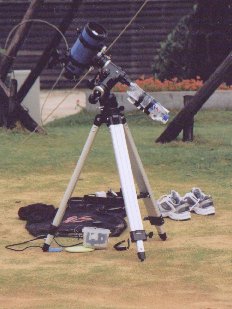
- Tripod: EQ-3. I was using water bottles for counterweight. Using an equatorial mount is much more convenient compared to the standard photography tripod I was using at my previous solar eclipse observation (Turkey 2006).
- Telescope: SkyWatcher Makszutov-Cassegrain 102/1300
- Camera: Pentax MZ-5 SLR (film camera)
- Filter: My original plan was to use Baader Astrosolar film (ND 5.0) , but I was using clouds.
Partial phase
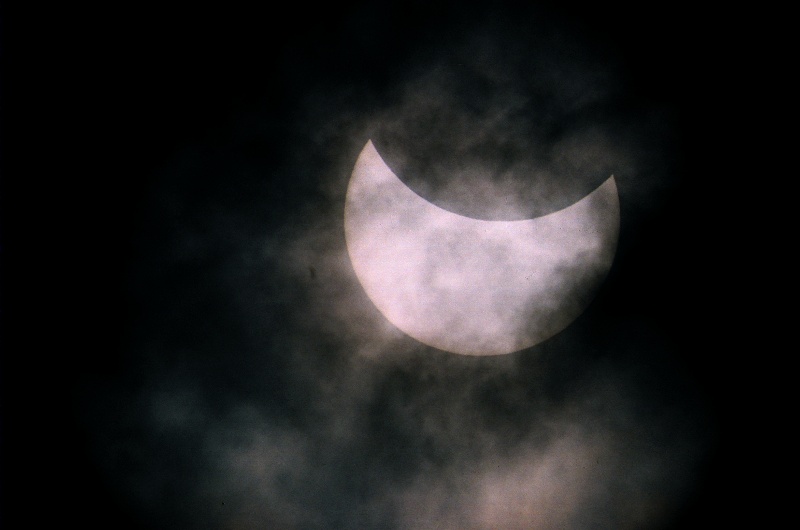
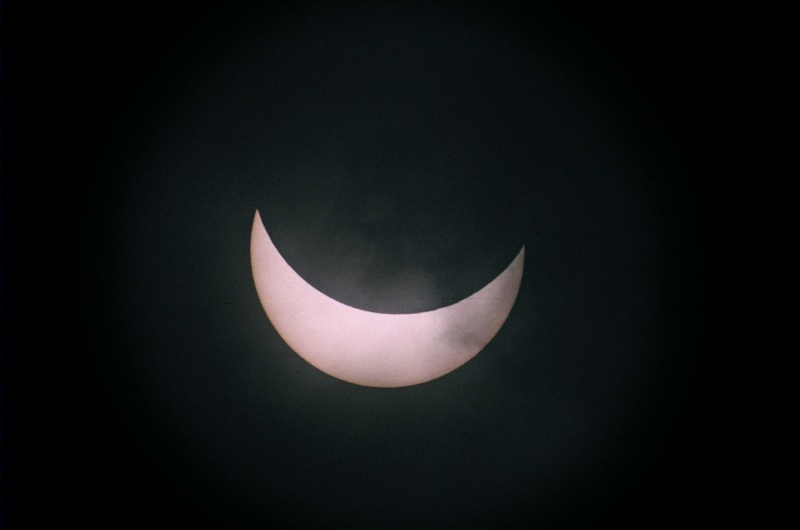
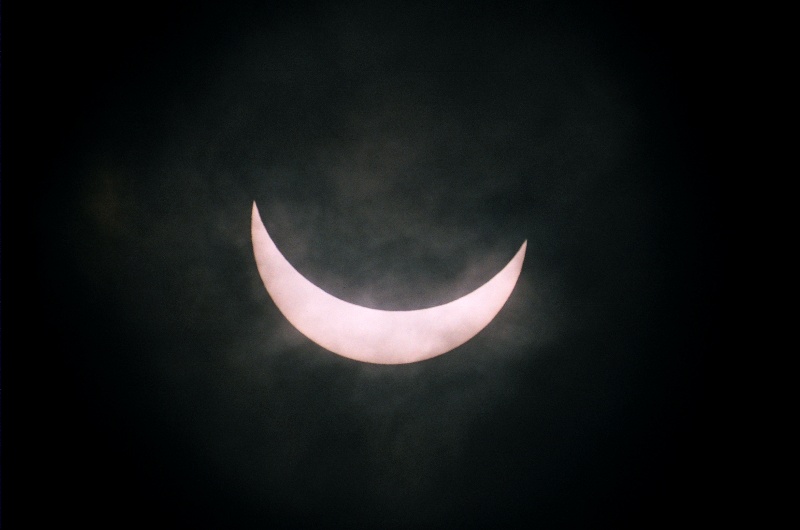
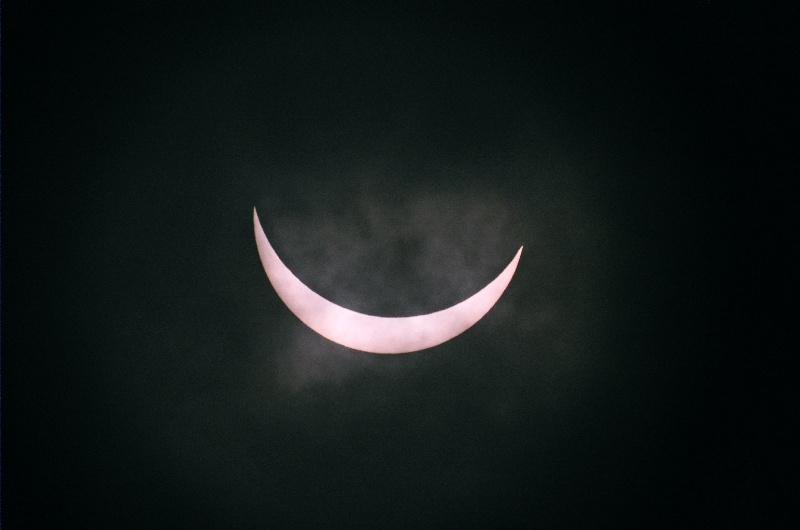
It is relatively easy to prepare for the partial phase since we have to photograph the partial Sun the same way we photograph the full Sun. A partial solar eclipse is an even better preparation. Even if the weather is bad, we still have a chance to create a few good pictures.
I've attached my telescope to the camera using a T2 lens mount adapter for Pentax K mount (similar adapters are available for other camera brands as well). I was using the telescope as a 1300mm F/12.7 lens. The diameter of the Sun's image is 12mm on the sensor.
According to my tests +2EV exposure correction is required (as compared to the spot metering) for the best results.
The clouds make all my calculation useless. I was using ISO 400 negative, no astrosolar film and 1/2000s exposure time instead.
The thickness of the clouds were changing continuously. I was able to take pictures without astrosolar film when the clouds were thick. When the weather was better and the clouds were thin I was unable to take good pictures. It was too bright without the filter and it was too dark with the ND 5.0 filter. Probably I should have had two filters: ND 5.0 and ND 3.8.
Weather
The weather was quite terrible all day, we were able to take a few pictures before the totality. Unfortunately during the totality very thick clouds spoiled out view. After that we had a few good minutes and it started raining so we had to take shelter.
A fellow eclipse chaser created a video about the tour: first part, second part.